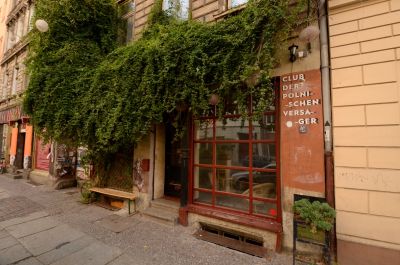Images of Poland in the minds of Germans

Here, the three-part ZDF television film "Our Mothers, Our Fathers" (2013) seems almost symptomatic. It is the fictional story of the fate of young Germans during the war. While the German crimes against the Jews in the East are discussed in detail, the Polish resistance against the German occupying forces is simply sketched over as well as being presented as anti-Semitic. Apart from the fact that the overall script seems quite absurd, the high viewer ratings clearly show how the memory of German crimes in the eastern part of Europe has been prioritized in the media in recent decades and which of the competing ideas of "victims" has emerged in people's minds: fixed images in the mind can often be misleading when people are looking for evidence.
But if we consider the various historical layers of Polish traces in German minds, we also come across some positive examples. For example, the enthusiasm for Poland in 1832, when liberal circles in Germany acclaimed the passing "heroes" who had been beaten in their struggles against the Russian Czar (the so-called "Polish passage"). This is always brought out of the history books when there is something to celebrate, be it Communist brotherhood in spirit and in conflict, or reconciliation and common goals in Europe and the world. Years ago the political scientist Klaus Bachmann called the mantra-like return to such undoubtedly praiseworthy and outstanding commemorative rituals, "reconciliation kitsch". Of course this kitsch also has something to do with the fact that there is only a limited repertoire of positive images in German-Polish history and these have been superimposed by images of confrontation, hostility and horror. Pictorial imagery plays a major role here. While there is no authentic pictorial representation of the Hambach Festival, the great liberal rally at the end of May 1832 in which Polish participation was evident, there is no shortage of battle paintings and war photographs of German-Polish conflicts throughout history. Thus, when the GDR wanted to highlight common progressive traditions in the German and Polish past, a painter was summarily commissioned to produce a Hambach painting based on contemporary engravings, on which the Polish flag was proudly displayed in white and red next to the German flag. This image was later used on a German postage stamp ...
This ambivalence shapes many memories in Germany and Poland. Take John Paul II, for example. From a German perspective he is not only seen as the "Polish Pope" and the Keeper of the Seal of Catholic traditions, but also as a representative of the Polish traditionalism which seems to shape essential parts of political and cultural attitudes of the neighbours on the other side of the Oder and Neisse rivers. Despite everything he succeeded in arousing sympathy for a country surrounded by so much unintentional and deliberate partial and total ignorance. Solidarność, Poland's great freedom movement, caused a wave of admiration and solidarity to roll through German-speaking countries. But at the same time it caused uncertainty – a trades union movement led by a moustached electrician and hollowed out from within the Eastern bloc – could that ever work out well?
When all's said and done the Pope and Solidarność have helped to reduce the ubiquitous images of war. But this could be dangerous if they also serve to portray German-Polish history only in the highest tones and to sweep under the carpet everything that separates, irritates and annoys. For not everything that glitters is gold, neither in Poland nor in Germany. Which brings us back to the present: instead of questioning faulty structures people prefer to talk about the difficulties in practical cooperation. This ignorance also applies to ideas about hidden or open poverty as a cross-border phenomenon. For example, do people like Brigitte Jäger-Dabek really have to write rapturous travel-guide prose for political education: "Warsaw has developed into a real boom city like you see in glossy magazines: it attracts investors and companies from all over the world, enjoys low unemployment and the price of property can vie with that in Western Europe. [...] It is astonishing to note that people in major Polish cities are now struggling with problems similar to those encountered in German cities: the search for affordable housing, finding well-paid jobs and infrastructure problems in the transport sector. In addition Poles are not, as we might expect, xenophobic but cosmopolitan hosts who – even in the middle of Warsaw – greeted German fans with open arms and a myriad of waving German flags".[2]
[2] Brigitte Jäger-Dabek: Die Bilder in unseren Köpfen. Deutsche Polenbilder – Polnische Deutschlandbilder, Stade 2013, p. 6 f. (e-book).


